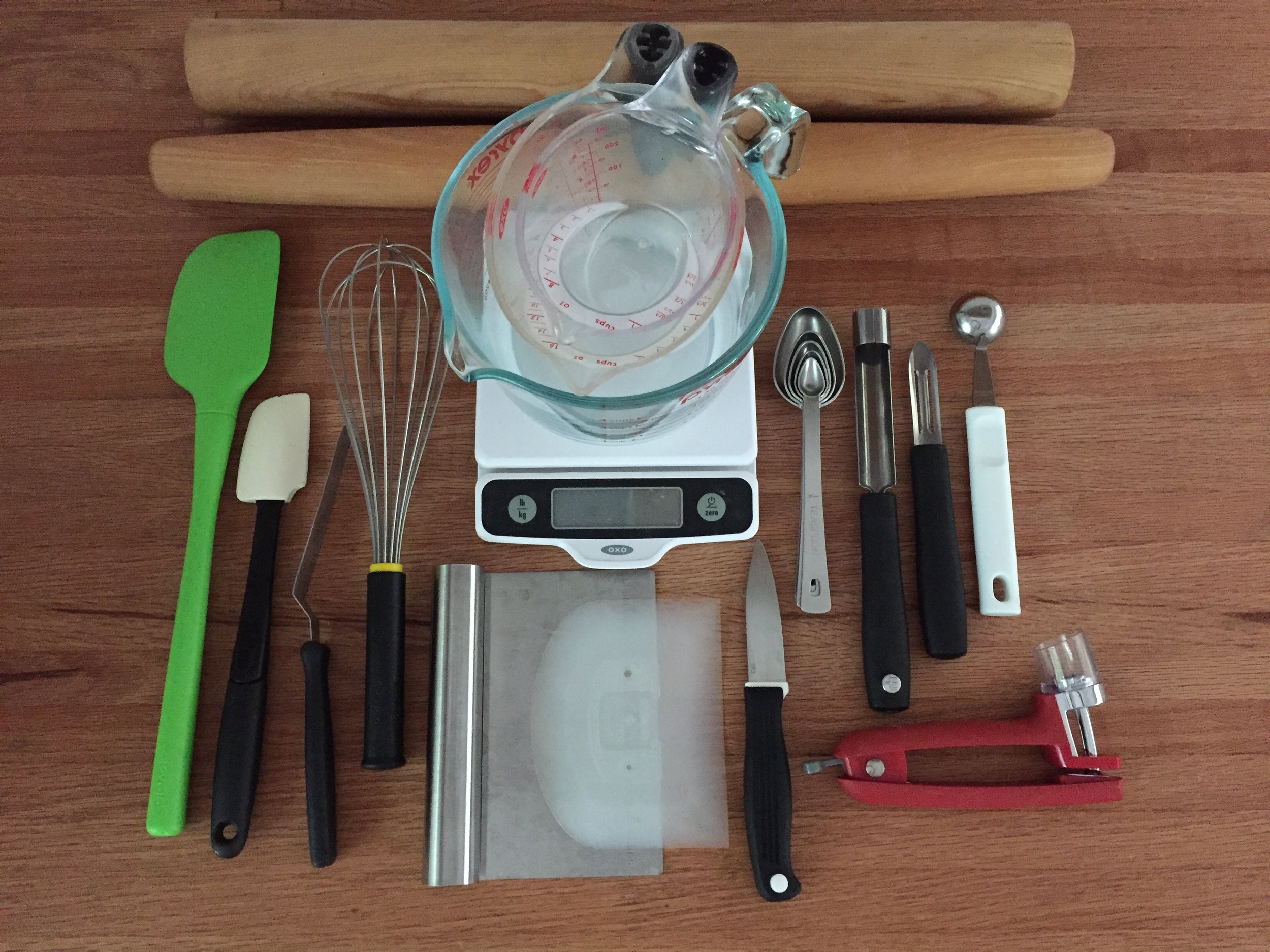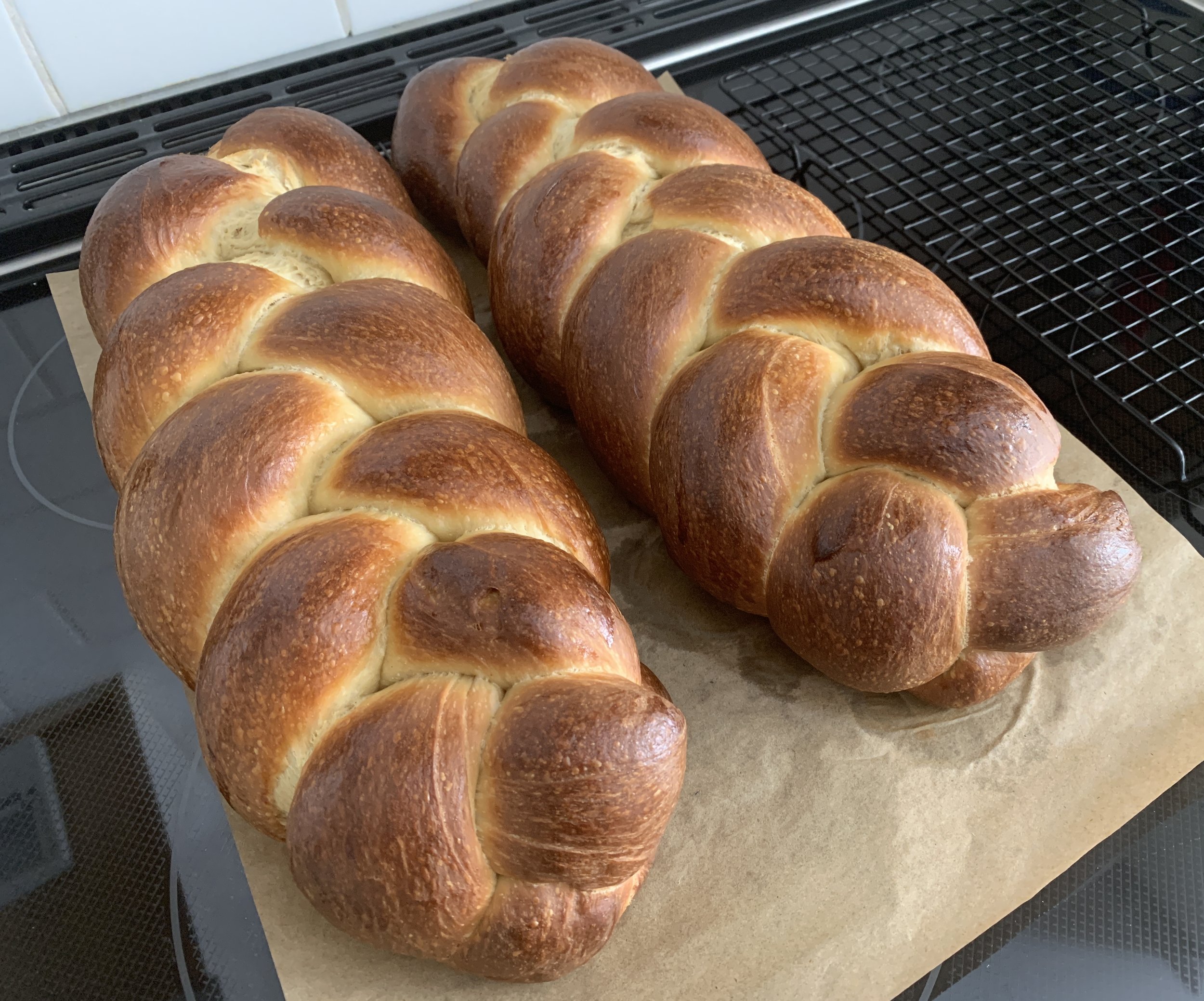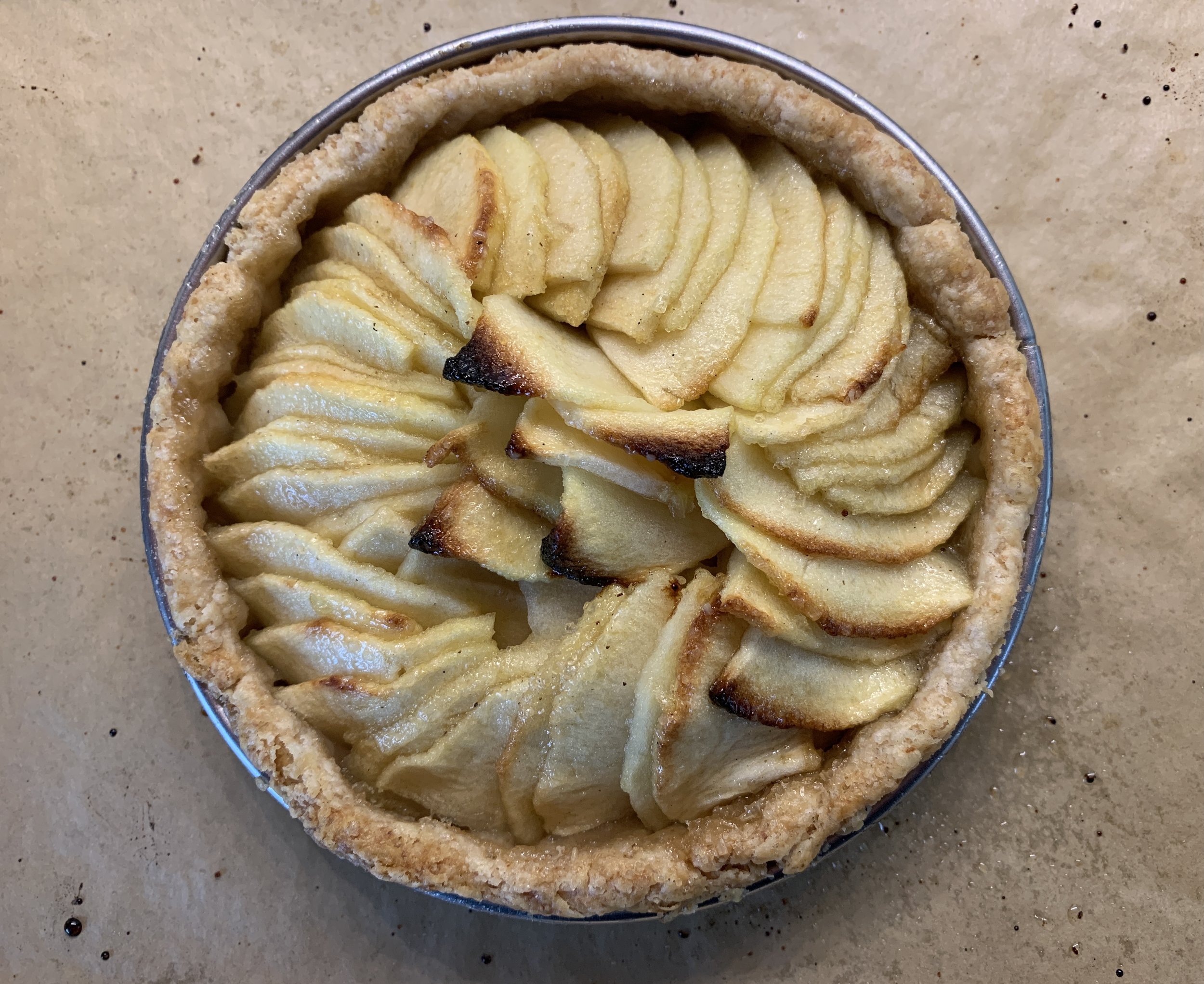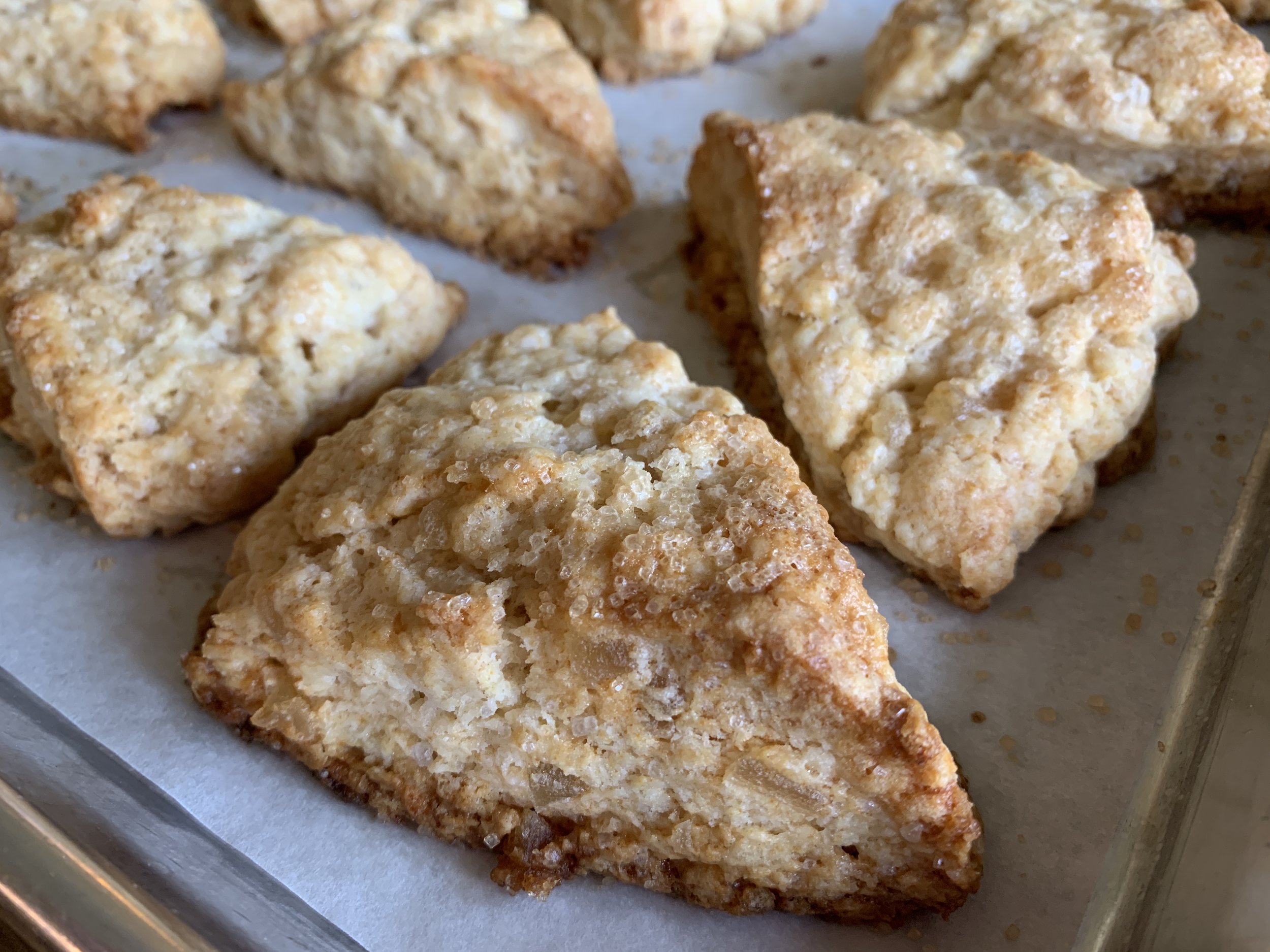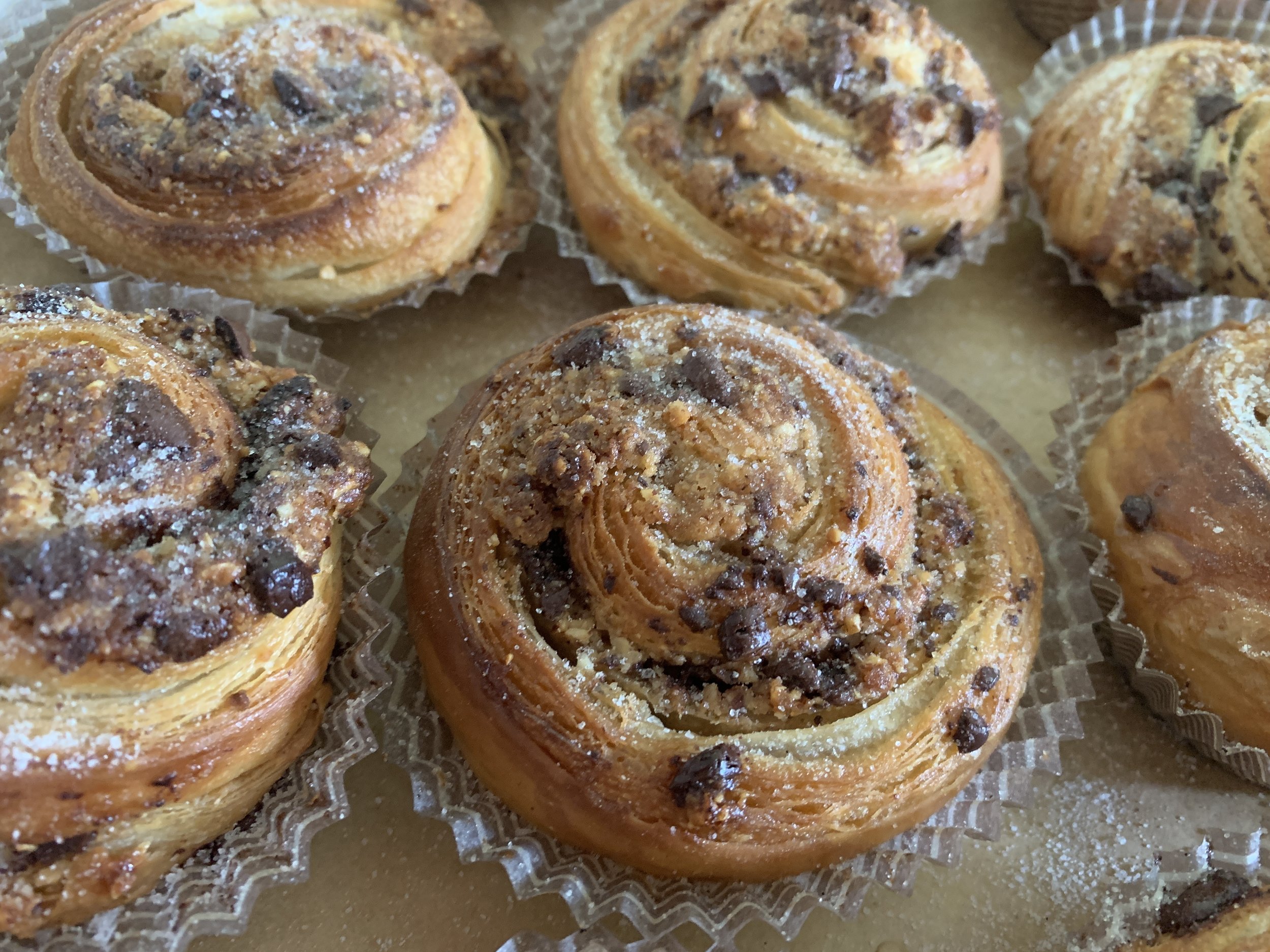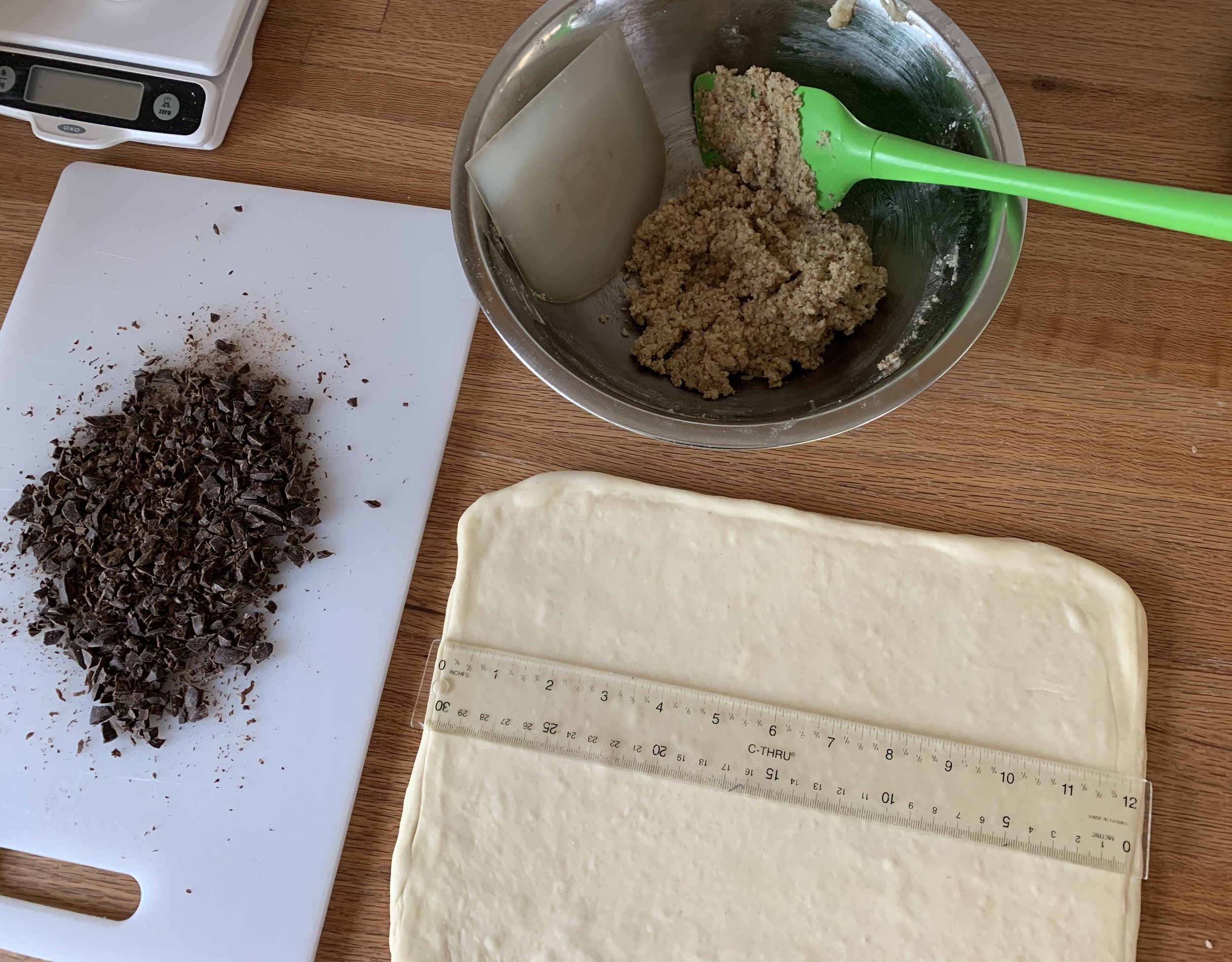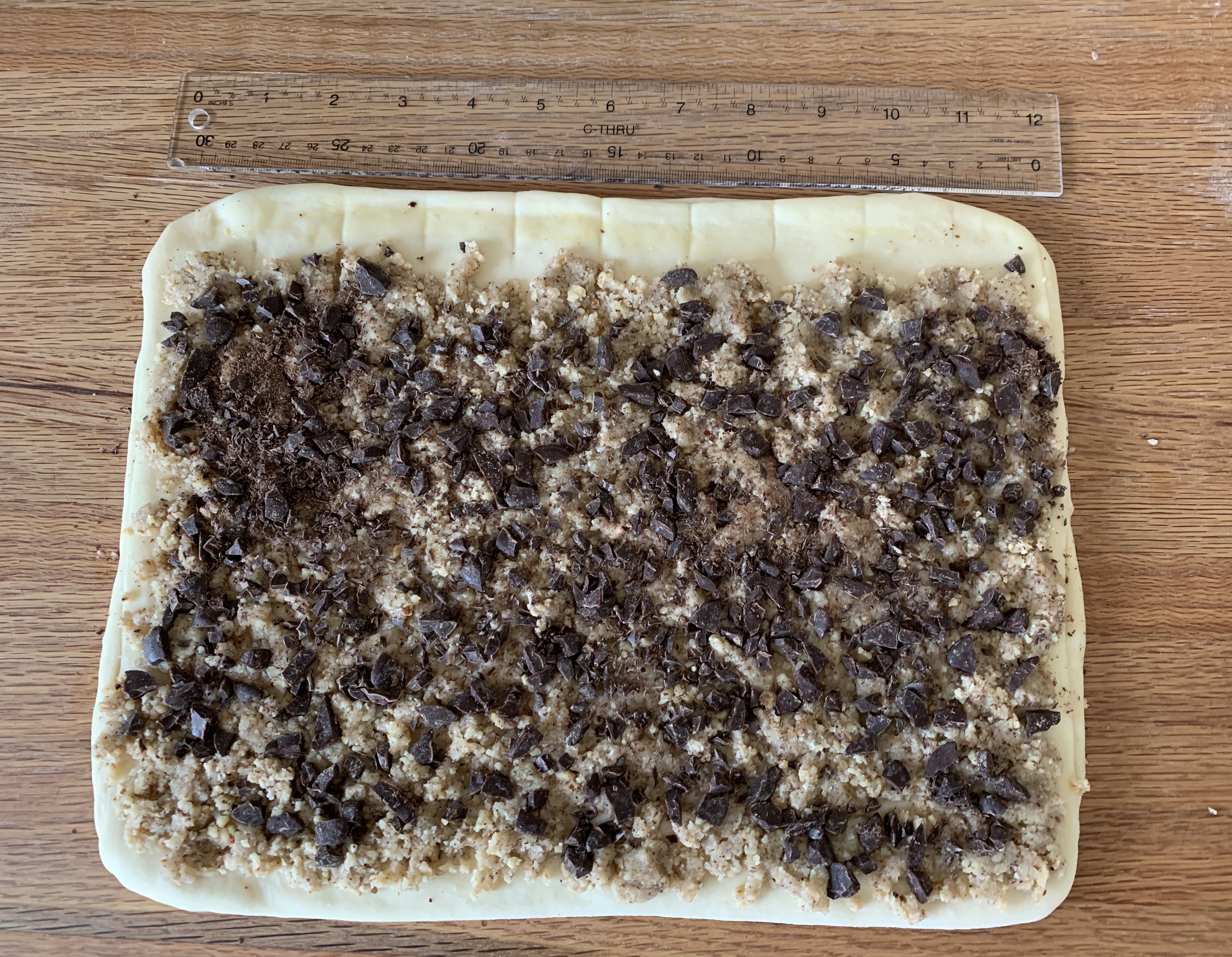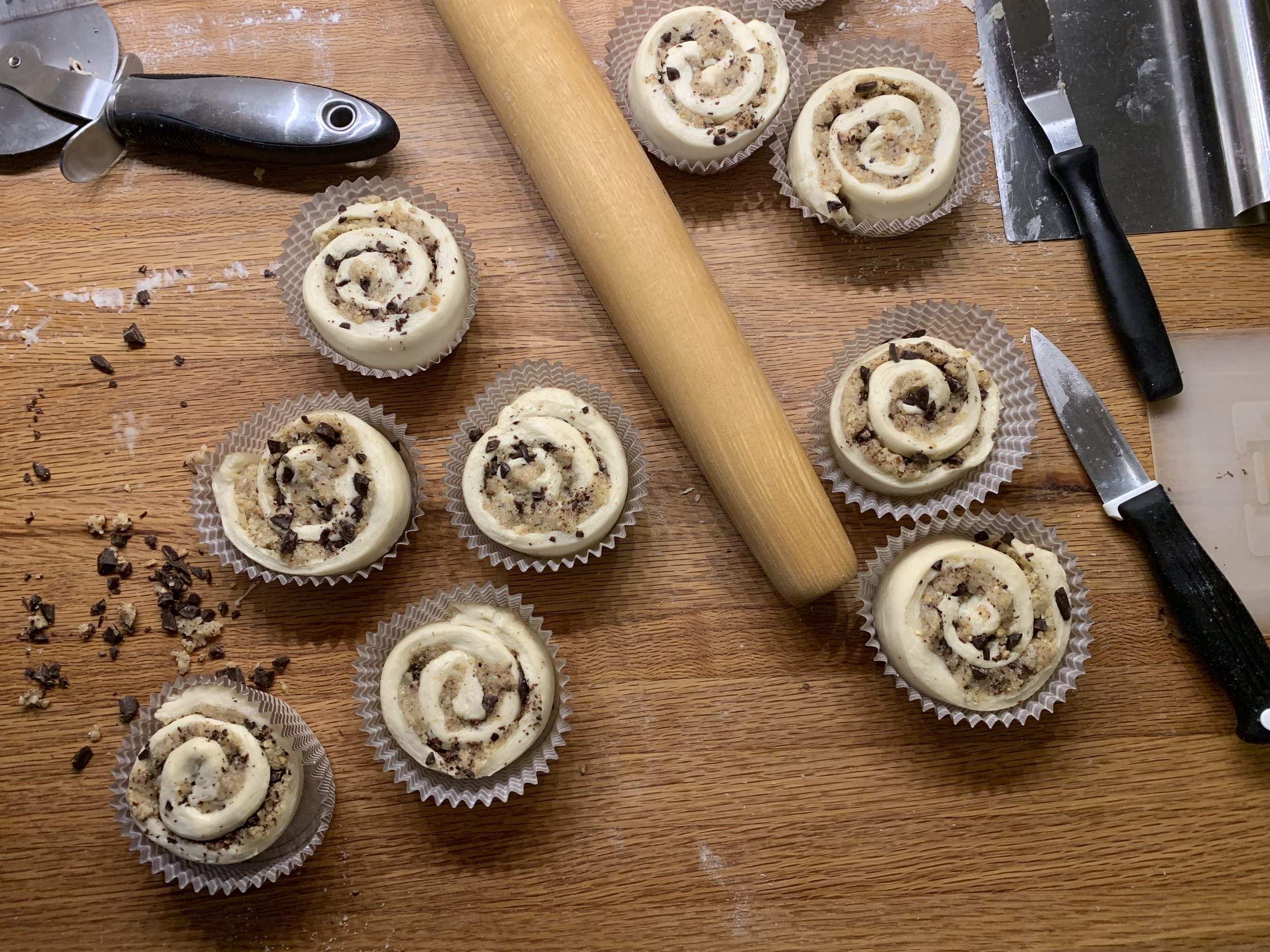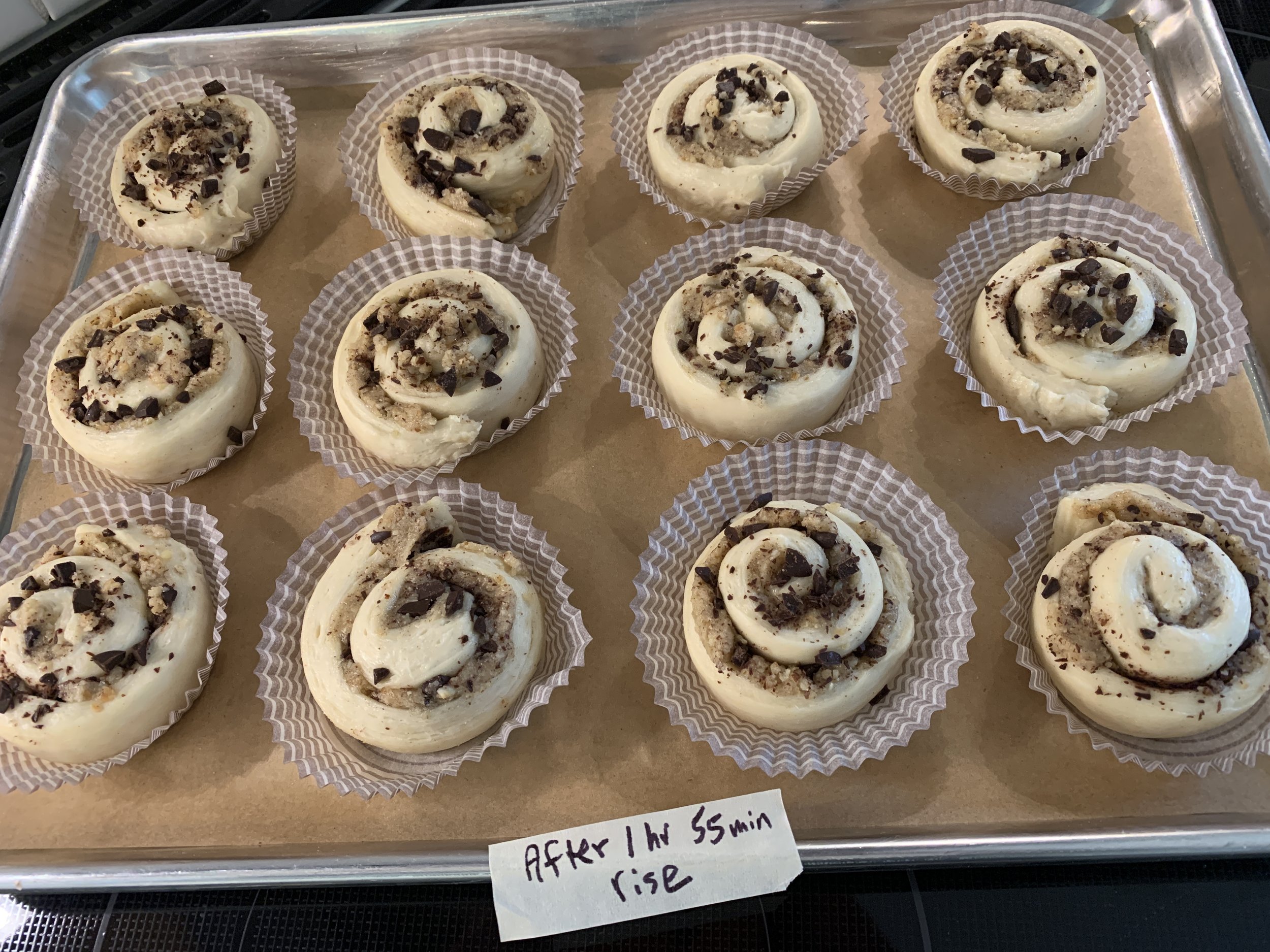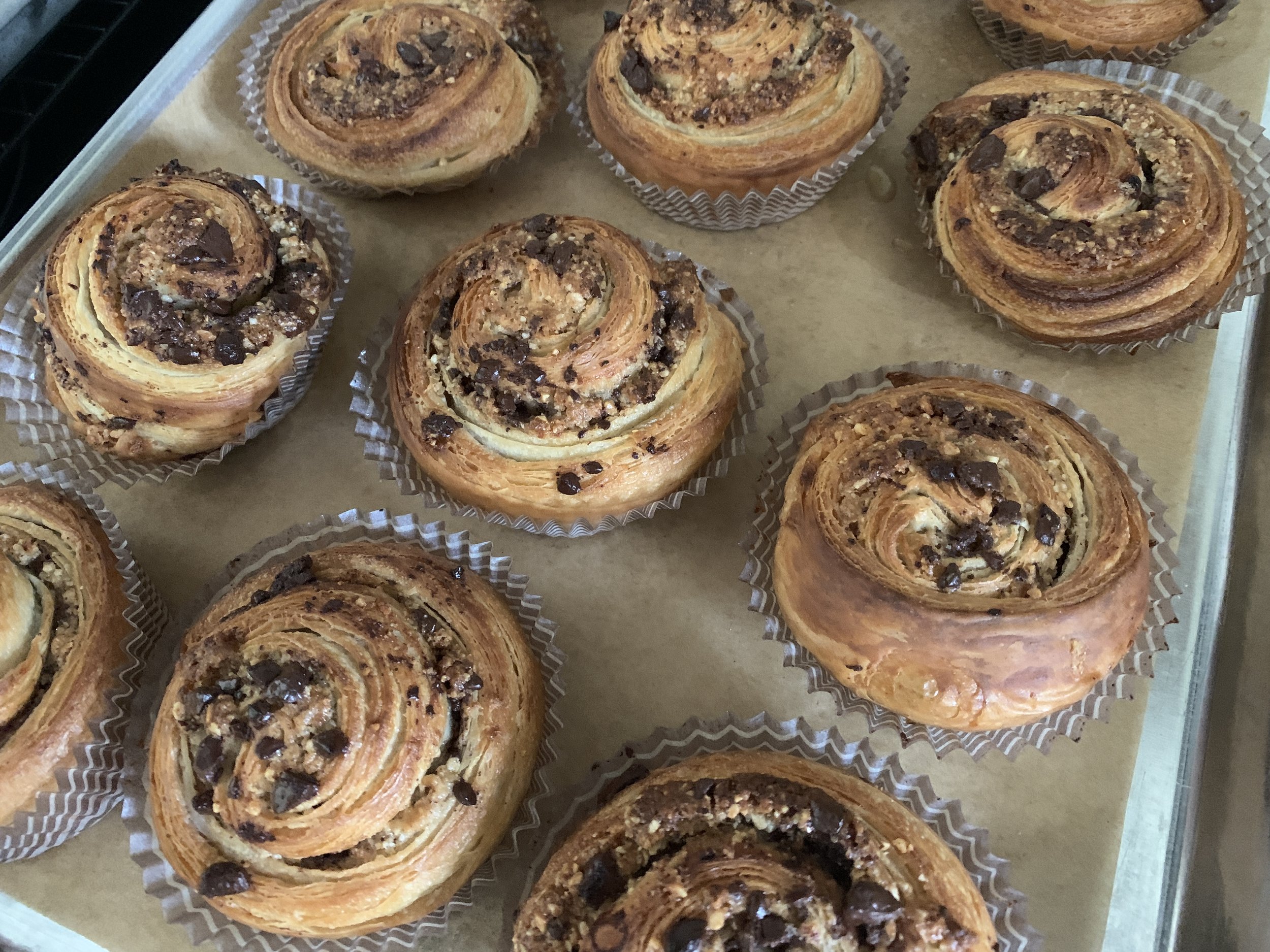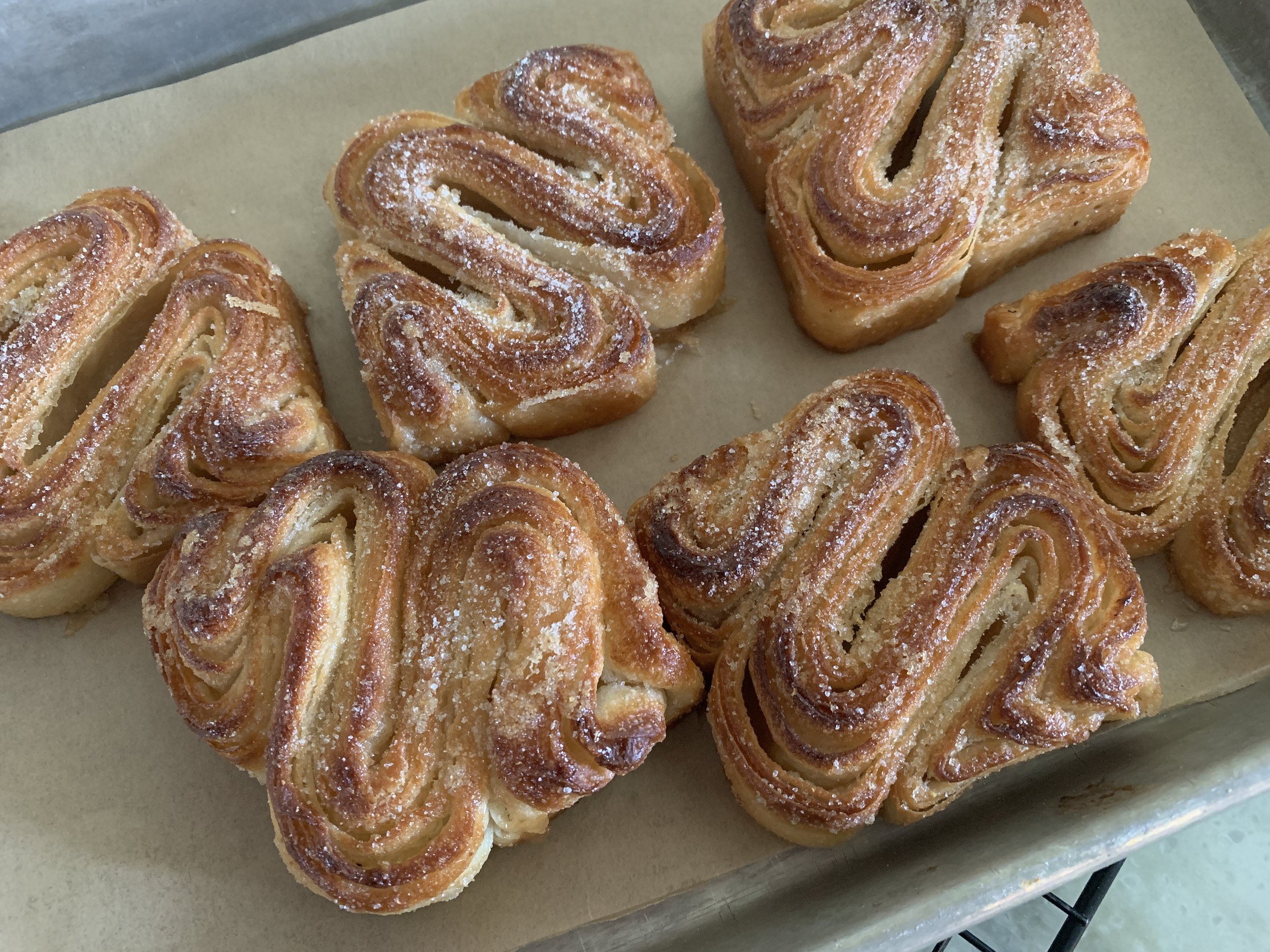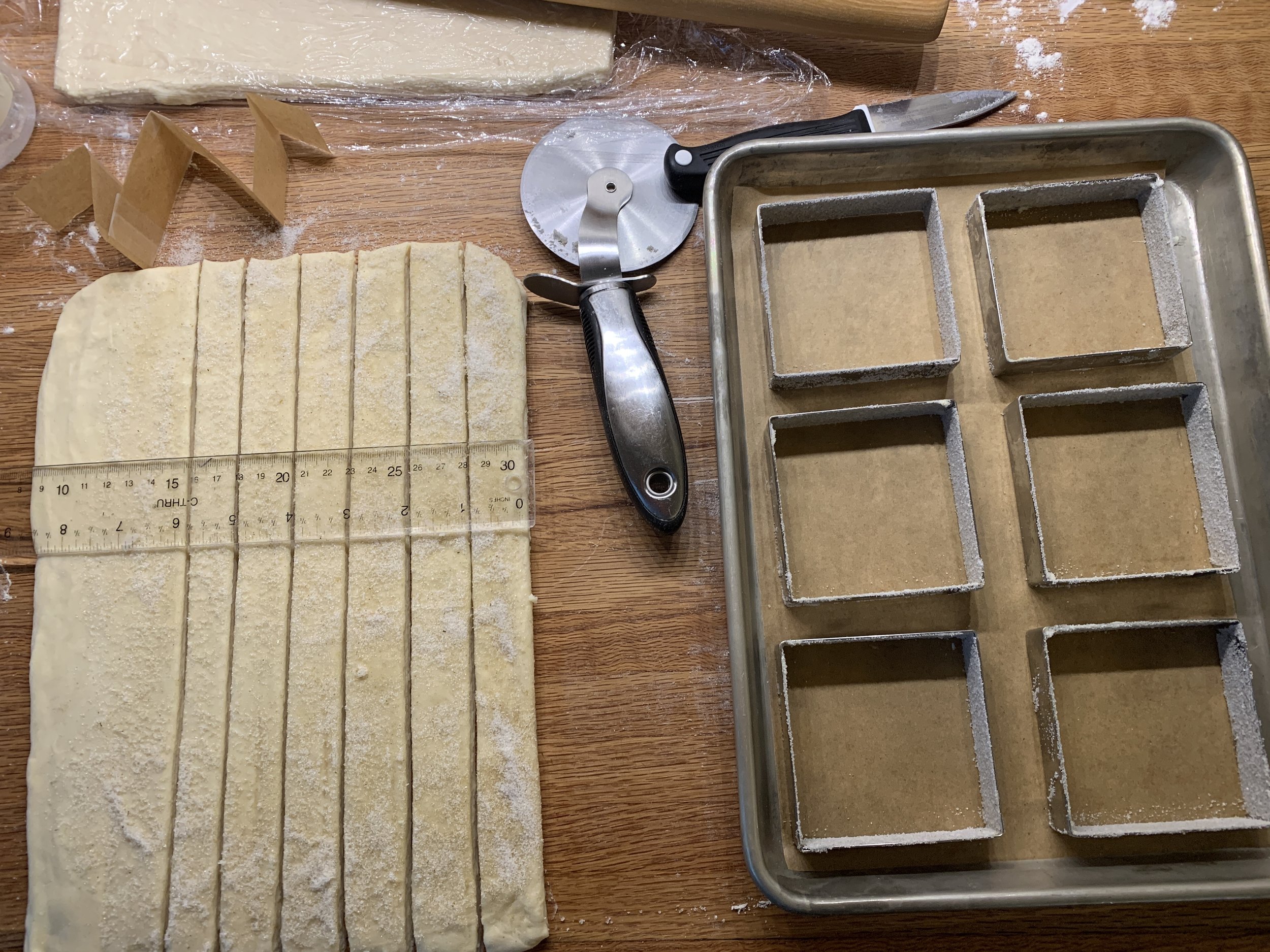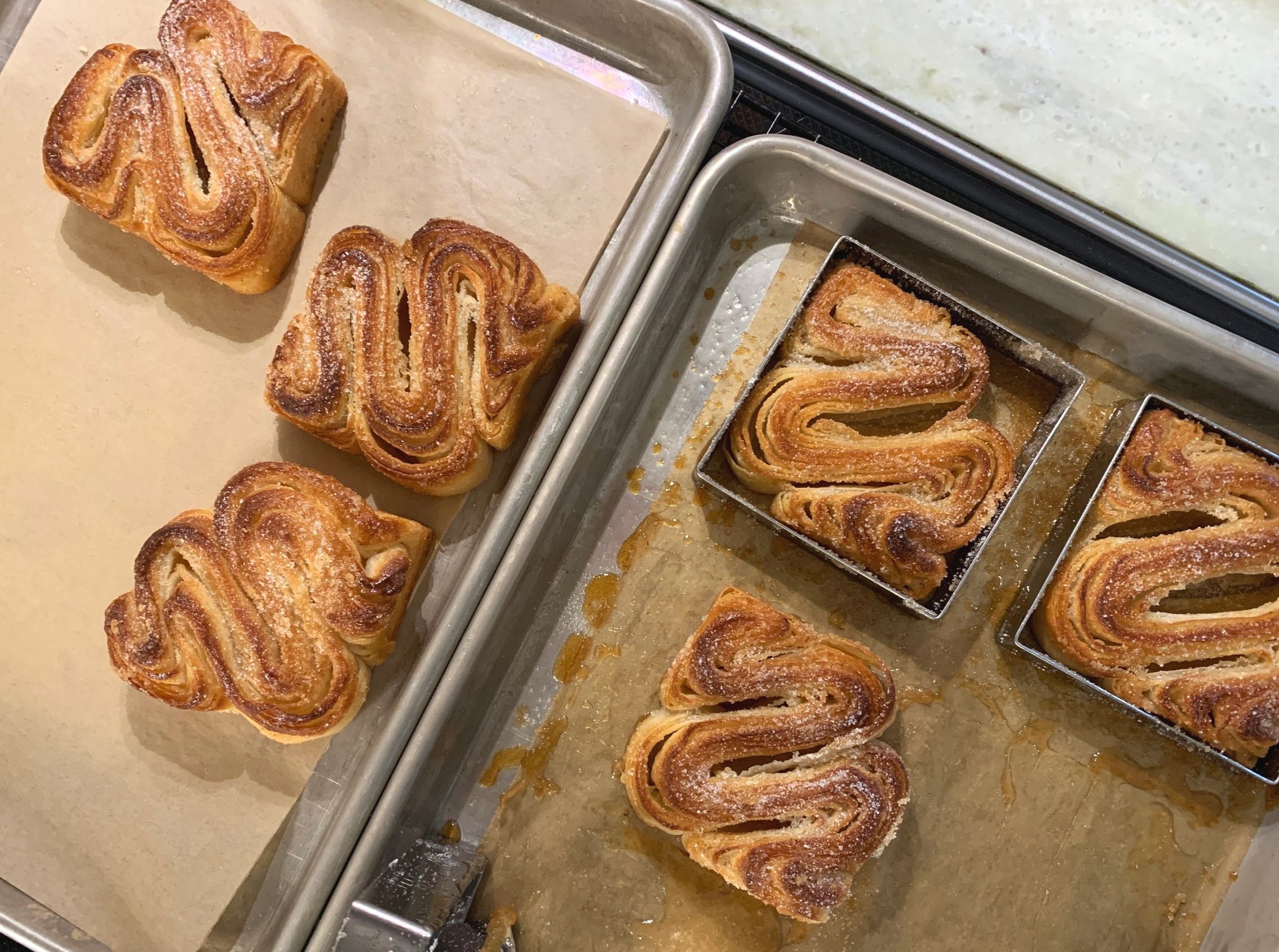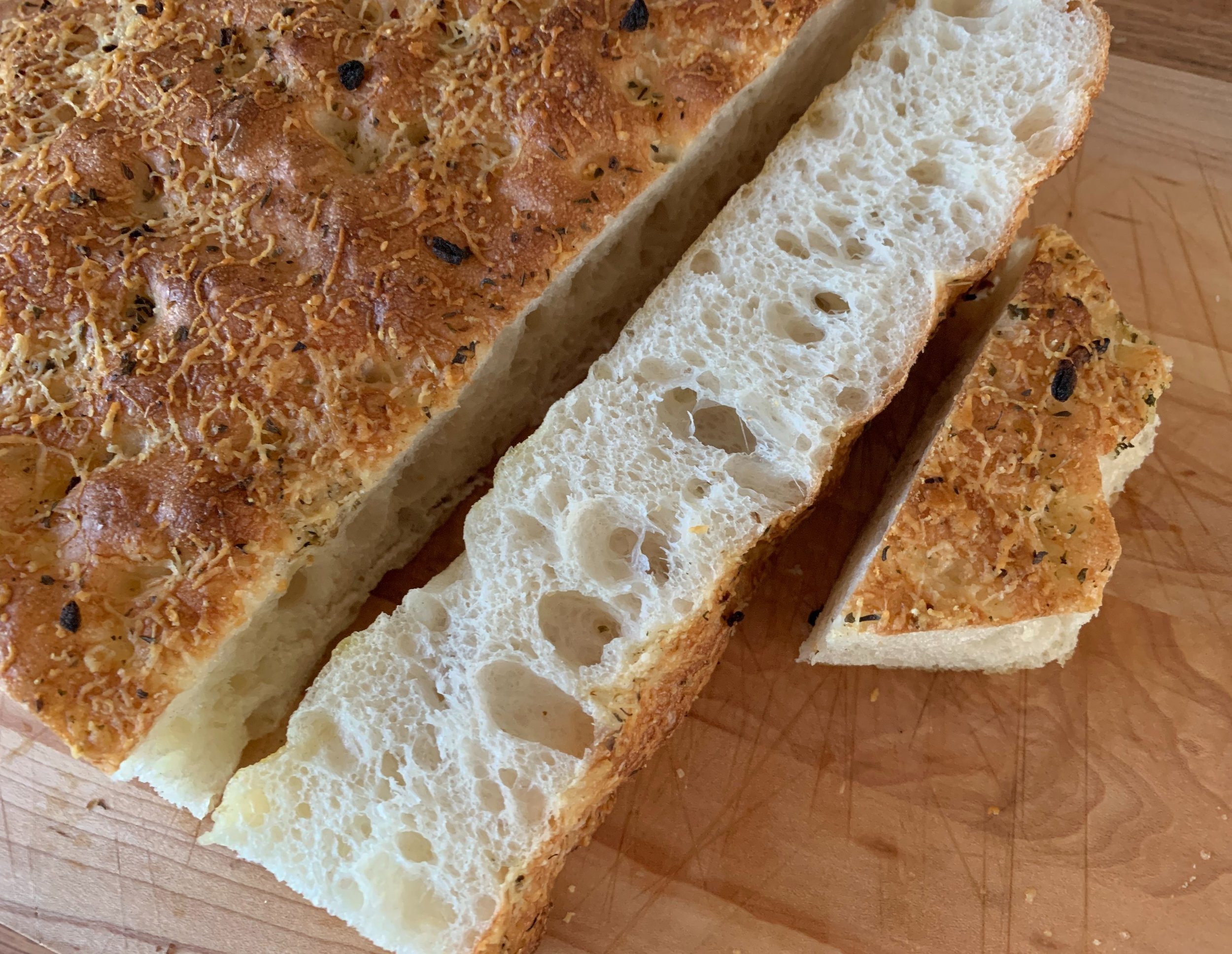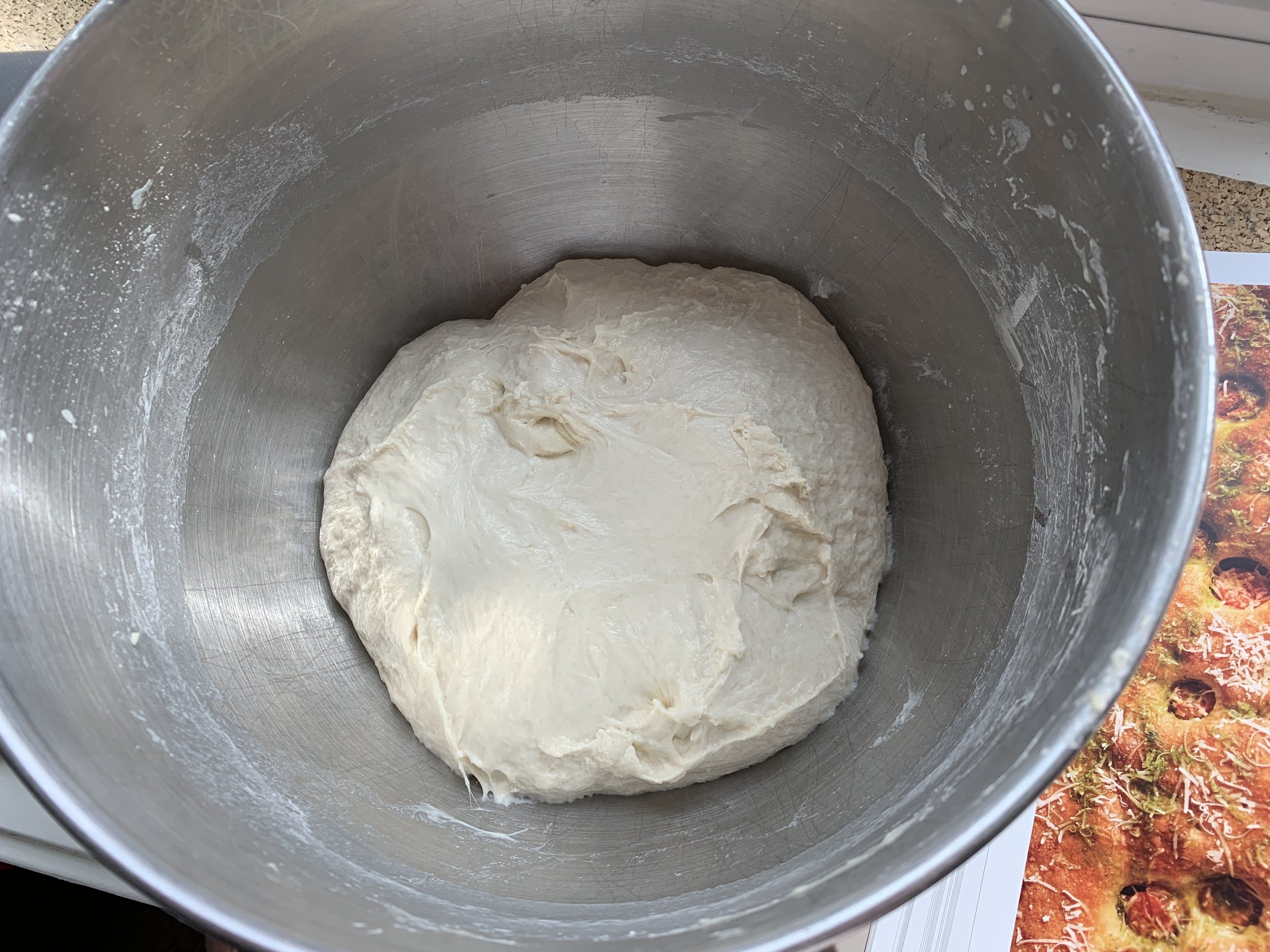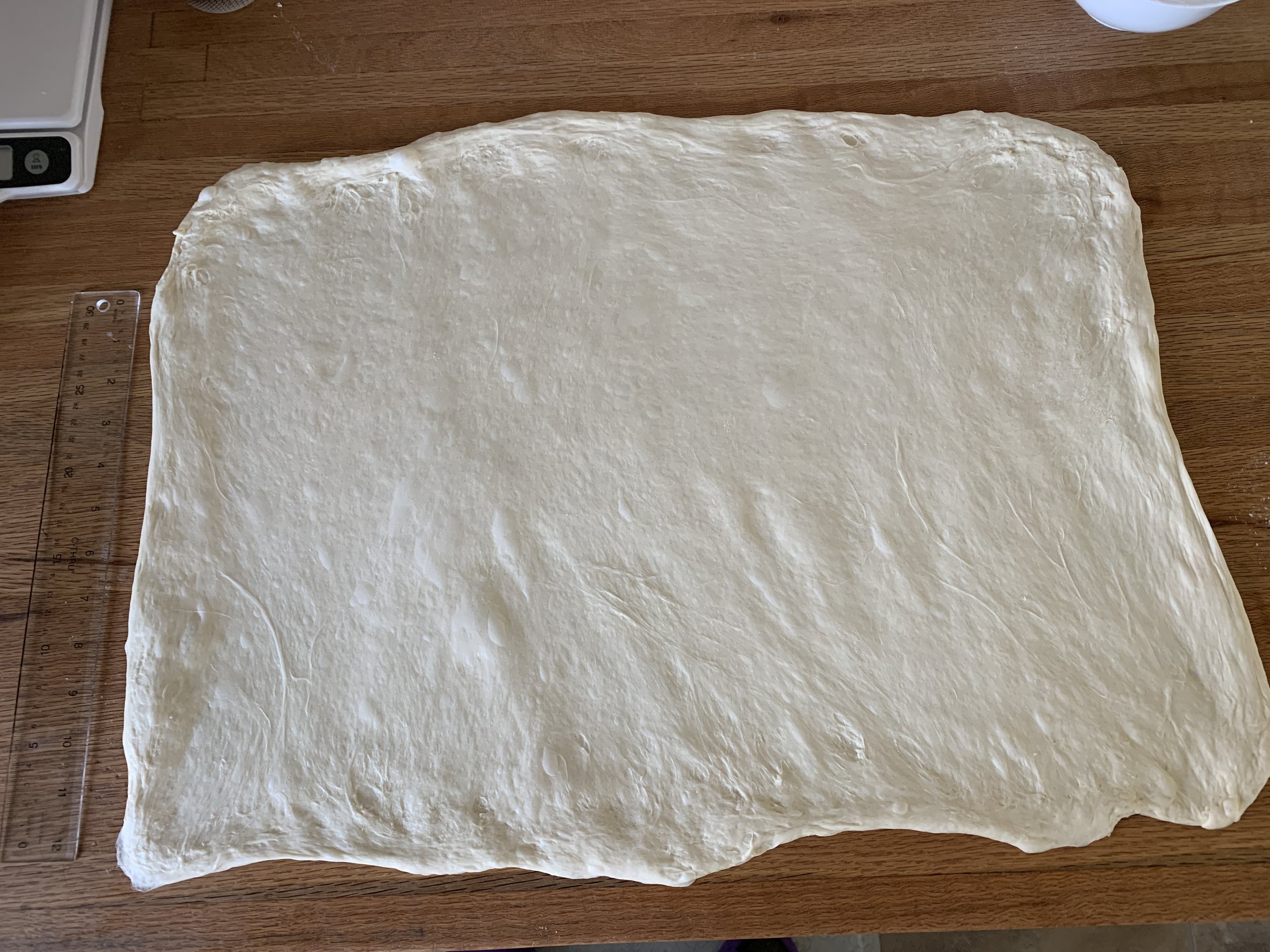For the love of baking
/Assorted goodies for a neighbor’s birthday party
Many of us pursue baking simply for the love of it - I know I do. Believe me, I know how fortunate I was back in 2006 to attend pastry school in both Florence and Paris. As a new career and later-in-life endeavor, it was exciting, emotionally charged, exhausting at times and well worth it.
Though I’m both “home schooled” and professionally trained, it’s not a search for fame or fortune that keeps me in the kitchen. Trying new things, reading about how others approach their craft, tweaking a recipe to create a different flavor combination all help to keep me coming back for more.
I find the process - planning, prepping and baking all the way to tasting and sharing - so calming and rhythmic. Even cleaning up, when all is said and done, is its own rite. Everything washed/dried, organized and stored in it’s own place, ready for the next baking adventure.
Just a few frequently used tools
Apricot blueberry danish
Cooling challah
Fresh berry tarte
Caramel knots
The remaining content is taken from a post I first published on March 14, 2022 in the early weeks of Russia’s invasion of Ukraine. I posted it right on the heels of another post, and I suspect many of you who tend to follow this blog may have missed it.
“If pastry could change the world” still captures what baking means for me and so many others. Enjoy!
Valentine feuilletés
If everything could remind us of love . . . . .
If we could all share fresh bread, cheese and wine . . . . .
If a simple and delicious apple tart could make each day better . . . . .
If a bright, flashy, chewy macaron could shout “Be Happy”! . . . . .
If croissants could bring us together as one, multi-layered as we are . . . . .
If a buttery scone could make us giggle with delight . . . . . .
If creamy profiteroles could smooth out all the kinks amongst us . . . . .
If a shortbread sandwich cookie could hug each and every one . . . .
If caramelized Kouign-amann could roll us up in a big warm embrace . . . . .
Don’t you think the world would be a better place?
Here’s to all the bakers out there everywhere. Cheers!!
Summer beauty


